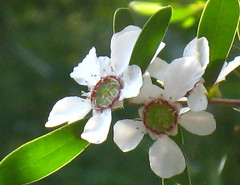 Walking from the Museum to Circular Quay (click on photo for the story)
Walking from the Museum to Circular Quay (click on photo for the story)Tuesday is Museum day, and today I transcribed moths and cicadas (would have stuck to one but the database is still in throes of development). So I transcribed records for the cicadas:
Tanna japonensis,
Huechys celebensis, Huechys fusca, Huechys pingenda. Try googling these. You won't have much joy if you are looking for an image or some information.
It may sound entirely boring to look at an image and to try to transcribe the information in the labels photographed together with that sad pinned and very dead insect. But it's not. Today's interest lay in a bloke called Hans Fruhstorfer, the larger part of whose insect collections are in the British Museum of Natural History, but it seems the Australian Museum acquired parts of his collection (perhaps not wanted by the BMNH, or perhaps the colonial museum proposed a sufficiently interesting sum of money to acquire them.) So
Huechys celebensis came from Bua-Kraeng, in the South Celebes and was collected (I think) in February 1896 by
Hans Fruhstorfer in his wanderings. Other specimens came from Than Moi, Tonkin, from Montes ?, Tonkin. Part of what we do is to take the collection site and put a latitude, a longitude and an uncertainty on these. This can be difficult when you are struggling to read an ancient hand written or even type written label and you have to experiment to find the place. So my first reading of Than Moi was Than Mei but this was not recognised as a Vietnamese place name. Experimentation and the database suggested Than Moi so I went with that. A large part of the Asian species I was transcribing came from Fruhstorfer's collection, so following his career and wanderings through the years was very interesting.
Place names test one's geography and resolve. I struggled for ages with Matang, thinking it might be Malang and a few other things, finally resolving on Matang since it matched the country... In Australia, I struggled with Menninga Q, reading it as Meninga Q, but Meninga only brought up a place in New Guinea...
So my day was spent following the adventures of Hans Fruhstorfer in Asia and S.E.Asia, and also those of a certain L.M. Courtney-Baines who by the last beautiful
Cerura australis moth had become L.M. Courtney-de Baines. What was also extraordinary, was that he had collected this moth at Bayview, in the years of 1966, 1967, 1974, 1984, 1985, and 1994(not sure about this last one, perhaps because at this point he had adorned himself with the particle). I remain amazed, and wondering how it was that this moth was collected by this bloke, at just this one place and over so many years. What is the story?
(Another image for this moth is at
Butterfly house.)
Grevillea subtiliflora
(A WA species, photographed at Mt Coot-tha Botanical Gardens, Brisbane, QLD)
